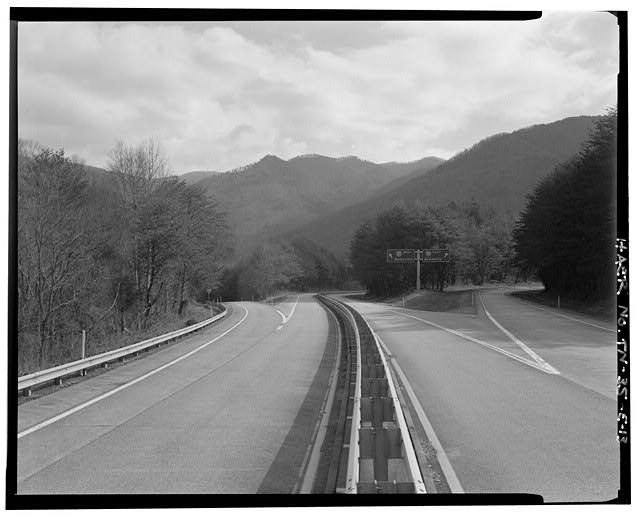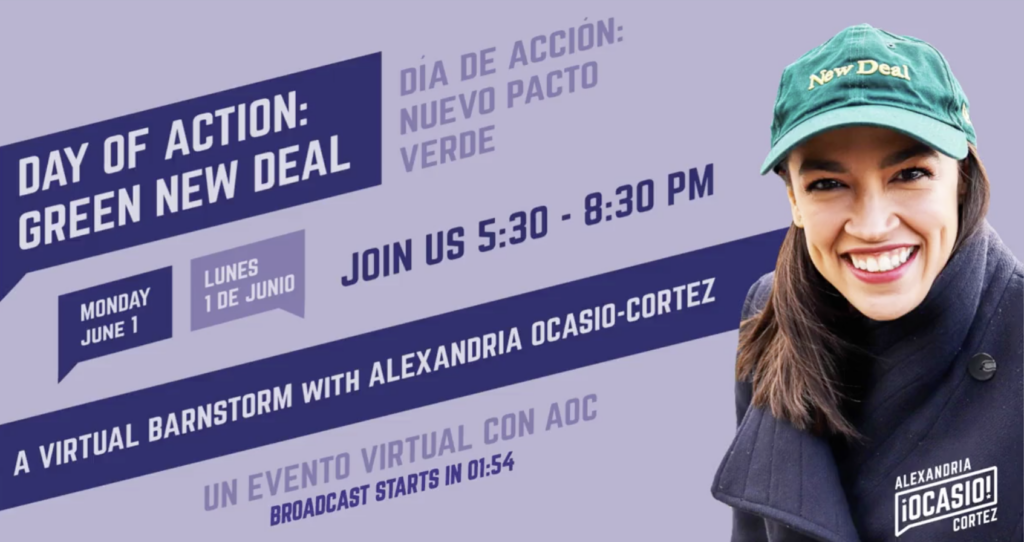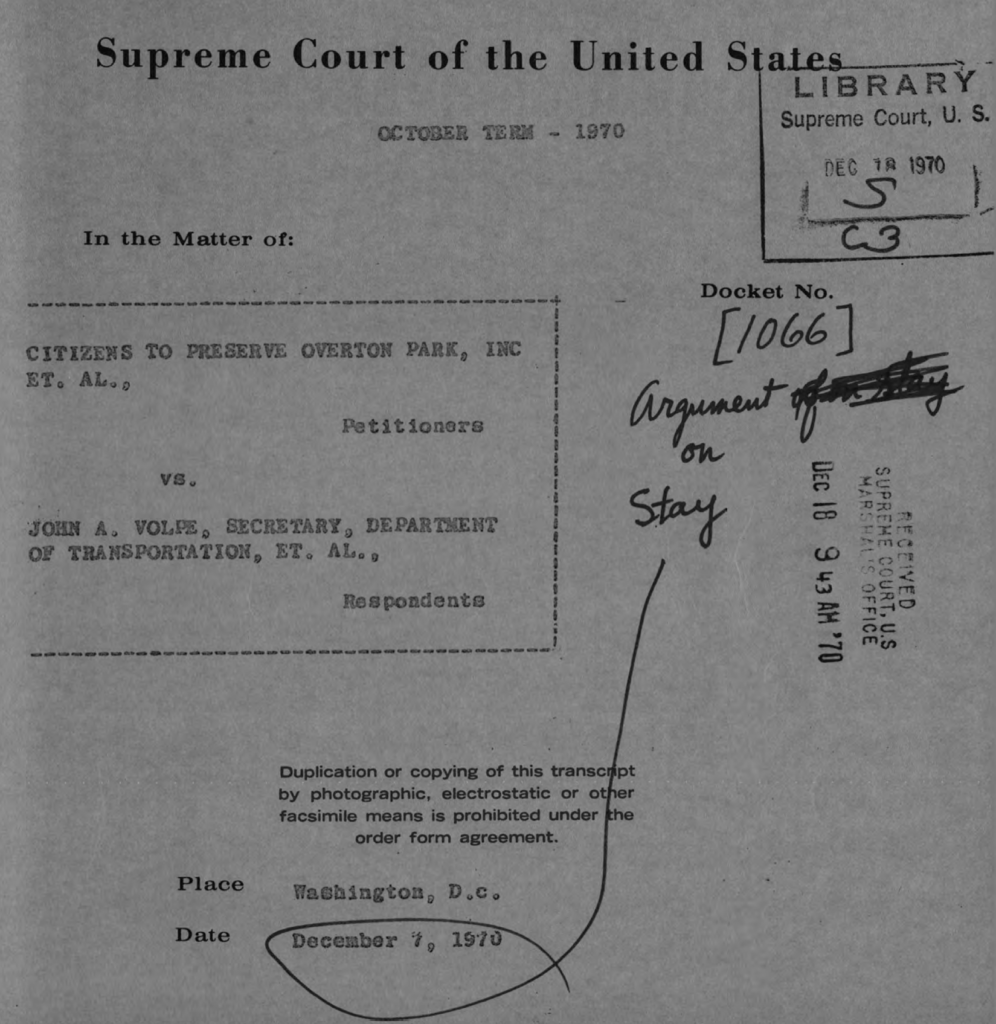It is a delight to see my article, “Concrete Leviathan: The Interstate Highway System and Infrastructural Inequality in the Age of Liberalism,” appear in Law and History Review. The article is the culmination of a research process begun nearly three years ago. Like any piece of scholarship, it distills an intellectual journey full of queries and quests that roamed far beyond the eventual 25 succinct pages of journal text that meet the reader’s eye. Writing here for The Docket provides a welcome opportunity say a bit more about my research journey, and offers a few otherwise behind-the-scenes reflections on the motivations and questions that guided this project, which blends legal history, political economy, and infrastructure studies—an approach I have developed in previous work and continue to elaborate in my book project, The Infrastructural State: The Interstate Highway System and State Building in Modern America.[1]

I began “Concrete Leviathan” with a simple but vexing question: why has the interstate highway system been able to etch such consistent patterns of racial and economic inequality into the national landscape? From the 1950s onward, interstate highway construction amounted to the destruction of poor communities of color, bulldozed to make way for the new highways.[2] The pattern itself has long been evident—especially to people who experience the reality in their daily lives in nearly every American city touched by the interstates. Historians and legal scholars also know the pattern exists, and I had already tackled the subject as well, writing about Syracuse, NY’s efforts to redesign a portion of Interstate 81 whose original construction destroyed the city’s Black business district in the 1960s.[3]
But why had politicians, planners, and administrators succeeded in imposing the pattern? Existing scholarship offered few leads. The answer, when I found it, lay in the history surrounding the first two federal lawsuits involving interstate highway construction to be appealed to the Supreme Court: Nashville I-40 Steering Committee v. Ellington (1967) and Citizens to Preserve Overton Park, Inc. v. Volpe (1971).[4] From the outset, the legal history of these cases—the former a forgotten loss for Black community defenders, the latter a canonical administrative law case—seemed primed to offer deeper insights into state processes of infrastructural development in modern America. At stake were questions about governance, citizen participation, and democracy in modern America.

Alongside historical and historiographical questions, current events spurred my curiosity in infrastructural inequality. I started my research for “Concrete Leviathan” in January 2021, while watching Joe Biden take office and wondering if his administration would fulfill its campaign promise to “Build Back Better” and lead the United States into a new infrastructural future. Infrastructure filled the news—and the political arena—as never before, at least in my lifetime. Much of the emphasis on infrastructure had in fact developed in the preceding years, and on Biden’s political left: few had brought as much focus to the issue as Representative Alexandria Ocasio-Cortez (D-NY), Senator Ed Markey (D-MA), and Senator Bernie Sanders (I-VT), who made the task of repairing and upgrading “crumbling” infrastructure systems central to their proposed ‘Green New Deal.’ By the time Biden took office many scholars, including myself, had delved into its unified approach to tackling climate change and economic inequality. One remarkable aspect of the plan was its recognition of the way existing American infrastructure systems have often produced social disparities, even as they have delivered important public provisions.[5]
This newly critical political perspective broke with past approaches to infrastructure campaigning, which have tended to double down on claims of boosting national economic growth and the related claim that subsequent benefits will spread evenly across society. This tendency was another topic I had written about, and again, the shift away from that paradigm in 2021 stood out to me.[6] It stood out even more when the critical perspective on infrastructural redevelopment advanced by AOC, Markey, and Sanders filtered into Biden’s administration. Stumping for his “American Jobs Plan,” he pledged to repair and improve the nation’s highways, bridges, railroads, water systems, electric grids, hospitals, schools, housing, and communications systems in a manner that would “mitigate socio-economic disparities, advance racial equity, and promote affordable access to opportunity.” By the standards of infrastructure campaigning, the focus on social equality was a radical statement.[7]
Things got really interesting when Pete Buttigieg, Biden’s new Secretary of Transportation, took the lead in articulating infrastructural justice issues. He addressed the uncomfortable history of racism in infrastructural planning in particular, turning to the history of the interstate highway system—the nation’s beacon infrastructure system, and one whose history is filled with claims of universal progress and prosperity—to explain his point. “There is racism physically built into some of our highways,” he told the press, before going on to discuss construction processes that destroyed poor and minority neighborhoods, displaced residents and businesses, and cast social and economic communities into cycles of poverty and inequality.[8]

Buttigieg’s recognition of these phenomena reflected a rising historical consensus that infrastructural development has produced inequality throughout American history. The racism central to interstate highway development offers a key case study. We have long known that planners and administrators set engineers and builders to work splitting farms in half, draining wetlands, and blasting through mountains—activities that cleaved and disintegrated entire regions even if economic integration could be measured at other scales and in other locales.[9]
In urban areas, demolished homes and displaced residents put other destructive effects of interstate construction on clear display. The harms, historian Nathan D.B. Connolly has concluded, were “intentional.” The interstate system’s “disruption,” “pain,” and “displacements” operated according to plan. For local, state, and federal officials, interstate highway construction could reorder the nation’s cities in accordance with racist and classist policies draped in convenient political slogans like “slum clearance” and “urban renewal.” At the peak of its destructive effects in the late 1960s, the interstate system displaced 200,000 people annually, and by the 1970s at least 1,600 neighborhoods in their entirety had fallen to clearance policies and the onslaught of the “concrete monsters”—the nickname soon appended to the interstates by those whose lives they upended. Displacement, as one interstate planner conceded, was “particularly serious in the big city black ghettos where the supply of housing is inadequate and relocation beyond the confines of the ghetto is severely limited by racial segregation.”[10]
So, in the midst of my research process, it appeared that historians and a growing rank of present-day politicians had come to a new interpretive agreement, much in line with the striking observation of the long-forgotten interstate planner quoted above. Still, I wondered what kinds of technicalities were at play here. If racism propelled the interstate system’s destructive course of development, this was still not an explanation of how such racism operated institutionally and legally. How, I was now asking, did law turn racism into asphalt and concrete?
One way to set about answering this question was to look at what happened as interstate officials began the process of bulldozing poor communities of color—but rather than follow the ensuing social history of impacted communities, as previous historians have tended to do, I followed the legal threads. By the 1960s, “freeway fighters” launched waves of “freeway revolts” in response to the interstate system’s infrastructural destruction. These nationally coordinated marches and street protests, constitutive element of the fractious 1960s, are enshrined in collective urban memories and live on in the “folklore of the freeway,” as the cultural historian Eric Avila famously put it. The freeway revolts, it turns out, live on in other realms, too: namely, in law’s spatial configuration of the built environment.[11]
When freeway fighters turned to the law halt construction, they encountered and challenged the very structures of modern American state building that had enabled the interstate system to take aim at their communities in the first place. Those structures were on clear display in the first two federal lawsuits involving interstate highway construction to be appealed to the Supreme Court.
The first, Nashville I-40 Steering Committee v. Ellington, moved through the federal courts in 1967. Flournoy Coles, chairman of the economics department at Nashville’s historically Black Fisk University, worked with the NAACP to devise a legal strategy. He raised questions about administrative procedures and the absence of adequate public hearing provisions, and focused generally on civil rights and racial discrimination claims related to interstate development in historically Black North Nashville. But the lawsuit came to an end when the Supreme Court denied certiorari. The preceding Circuit Court ruling had found no evidence of discriminatory intent, and administrators could continue their plans for interstate development.[12]
The second lawsuit to reach the Supreme Court was Citizens to Preserve Overton Park, Inc. v. Volpe, in 1971. In this case, a local resident named Anona Stoner led the legal effort on the ground, with assistance from the Sierra Club and other environmental organizations. With carefully coiffed greying hair, a handbag, and white heels, Stoner embodied different gender and racial politics and possibilities as she surveyed the planned route of interstate development through Memphis’s Overton Park. As in Ellington, much of the focus rested on administrative procedures and the role of citizen participation within those procedures. Though the Supreme Court’s ruling in Overton Park was not a decisive victory for environmentalism nor for community participation, the result succeeded in blocking this particular instance of potential park destruction at the hands of highway builders.[13]
While Ellington’s outcome has been largely forgotten, the Overton Park decision became a canonical ruling on judicial review of administrative action when the Court found that administrators had not followed procedures governing parkland destruction closely enough.[14] There are significant points of similarity anddivergence in these cases. As “Concrete Leviathan” shows, neither case did much to alter the governing practices under challenge. Ellington was a failure for plaintiffs seeking administrative justice. Overton Park made highway officials newly wary of groups that made environmental claims, yet the decision nonetheless guarded the boundaries of federal administrative authority carefully. The outcomes of the two cases reinforced rather than eroded the methods of infrastructural state building in question, even as Overton Park helped some litigants influence policy.

It is on this point that the differences between the cases are important. Discrepancies between the two offer a window into the racist landscape of state building navigated by the cases’ respective litigants. The outcomes of Ellington and Overton Park meant that neighborhoods would continue to be destroyed, while parkland would be protected. Read together, these cases lay bare the legal and administrative practices responsible for modern American liberalism’s difficulties dealing with structural issues of racial inequality.
The result, by the 1970s, was an instantiation of federal administrative governance that included new but narrow opportunities for citizen input and participatory democracy. Change was limited and came in distinctly racist dimensions. The slightly-reformed legal landscape favored environmental protection—an issue generally prioritized by whiter and wealthier freeway fighters—over neighborhood protection. By turning bulldozers and highway construction crews away from parkland and ever more concertedly toward neighborhoods, environmental victories were poised to come at the direct expense of poor communities of color. “Concrete Leviathan” explains this dyadic reality and the deeper mechanisms of law and governance that constituted it—mechanisms that were ultimately, and ironically, strengthened in the course of freeway-fighting litigation.[15]
In sum, Ellington and in Overton Park reinforced a legal bulwark that protected the advantages of white, affluent litigants who wished to preserve unbuilt spaces, and blockaded Black litigants who wished to preserve their neighborhoods. The wide disparities and narrow reforms reflected in Ellington and Overton Park combined to insulate and maintain the nation-spanning paradigm of infrastructural state building responsible for the interstate highway system and its dyadic promises and perils. That paradigm seldom impacted all equally as it bulldozed local prosperity in the name of national economic development, cementing racial and class hierarchies in place with all the permanence of asphalt and concrete. The legacy of this state building regime endures: the concrete Leviathan that defines the modern American state’s territory is a creature of law that has inscribed spatial inequalities at dramatic physical and temporal scales throughout the national landscape.
So, how can Americans escape that legacy and actually “Build Back Better?” That is the next puzzle. Legal scholar and ACLU president Deborah Archer has advocated for the creation of “racial equity impact studies” (REIS) that provide “a systematic, comprehensive, and holistic review of how racial and ethnic groups will be impacted” by new infrastructural repair and development projects.[16] Reminiscent of environmental impact statements, this model holds promise. But designing and implementing practices capable of constructing a more equitable built environment will first require thorough historical assessments. Before REIS can do their job satisfactorily, we will need to account for every aspect of how communities have been “impacted” historically by the entwined processes of infrastructural construction and destruction. I hope “Concrete Leviathan” offers some of this history and opens up sightlines for further projects that continue to fill in the details of infrastructural injustice.
[1] See Teal Arcadi, “Partisanship and Permanence: How Congress Contested the Origins of the Interstate Highway System and the Future of American Infrastructure,” Modern American History, vol. 5, no. 1 (March 2022): 53-77.
[2] See Francesca Russello Ammon, Bulldozer: Demolition and the Clearance of the Postwar Landscape (New Haven: Yale University Press, 2016).
[3] Teal Arcadi, “I-81 Set Inequality in Concrete; Its Replacement Must Spread Prosperity,” Syracuse Post-Standard, September 18, 2019. Key examples of the literature include Deborah N. Archer, “‘White Men’s Roads Through Black Men’s Homes’: Advancing Racial Equity Through Highway Reconstruction,” Vanderbilt Law Review, vol. 73, no. 5 (October 2020): 1259-1330; Eric Avila, The Folklore of the Freeway: Race and Revolt in the Modernist City (Minneapolis: University of Minnesota Press, 2014); and Raymond Mohl, “Stop the Road: Freeway Revolts in American Cities,” Journal of Urban History, Vol. 30, No. 5 (July 2004): 674-706.
[4] Nashville I-40 Steering Committee v. Ellington, 387 F.2d 179 (1967); Citizens to Preserve Overton Park, Inc. v. Volpe, 401 U.S. 402 (1971).
[5] “Senator Markey And Representative Ocasio-Cortez Reintroduce Green New Deal Resolution,” Office of Senator Ed Markey, https://www.markey.senate.gov/news/press-releases/senator-markey-and-representative-ocasio-cortez-reintroduce-green-new-deal-resolution; https://berniesanders.com/issues/jobs-for-all/. Teal Arcadi, “The Secret to Legislative Success for Climate Activists,” Washington Post, January 28, 2019.
[6] Arcadi, “Partisanship and Permanence.”
[7] “Fact Sheet: The American Jobs Plan,” White House Briefing Room, March 31, 2021, https://www.whitehouse.gov/briefing-room/statements-releases/2021/03/31/fact-sheet-the-american-jobs-plan/.
[8] April Ryan, “Buttigieg says racism built into US infrastructure was a ‘conscious choice,’” The Grio, April 6, 2021, https://thegrio.com/2021/04/06/pete-buttigieg-racism-us-infrastructure/; Sydney Pereira, “Buttigieg Observed Some Highways Have A Racist Past. Here’s What That Meant In NYC,” The Gothamist, April 11, 2021, https://gothamist.com/news/buttigieg-observed-some-highways-have-racist-past-heres-what-meant-nyc; Corinne Grinapol, “Biden Administration Seeks to Address the Interstate Highway System’s Racist Past,” Engineering News-Record, April 15, 2021, https://www.enr.com/articles/51593-biden-administration-seeks-to-address-the-interstate-highway-systems-racist-past.
[9] See Ammon, Bulldozer.
[10] Nathan D.B. Connolly, A World More Concrete: Real Estate and the Remaking of Jim Crow South Florida (Chicago: University of Chicago Press, 2014), 8, 183. The unnamed interstate planner is quoted in Raymond Mohl, “Stop the Road: Freeway Revolts in American Cities,” Journal of Urban History, Vol. 30, No. 5 (July 2004): 674-706, here 680.
[11] Avila, The Folklore of the Freeway. A range of historical treatments explore the history—and cultural endurance—of the freeway revolts: see Ammon, Bulldozer; Eric Avila, Popular Culture in the Age of White Flight: Fear and Fantasy in Suburban Los Angeles (Berkeley: University of California Press, 2004); Mohl, “Stop the Road”; and Raymond Mohl, “The Interstates and the Cities: The US Department of Transportation and the Freeway Revolt, 1966-1973,” The Journal of Policy History, Vol. 20, No. 2 (April 2008): 193-226.
[12] Nashville I-40 Steering Committee v. Ellington, 387 F.2d 179 (1967); Nashville I-40 Steering Committee v. Ellington, 390 U.S. 921 (1968); “Flournoy A. Coles, Jr.,” Washington Post, August 5, 1982; Vanderbilt University, “Milestones and Achievements,” https://www.vanderbilt.edu/celebratingblackhistory/milestones/index.php/
[13] Citizens to Preserve Overton Park, Inc. v. Volpe, 401 U.S. 402 (1971); Citizens to Preserve Overton Park Collection, collected, processed, and bound by Bette B. Tilly, Memphis and Shelby County Room, Memphis Public Library and Information Center, frontmatter.
[14] On Overton Park’s enduring significance in law and legal studies, see Reuel Schiller, “Enlarging the Administrative Polity: Administrative Law and the Changing Definition of Pluralism, 1945-1970,” Vanderbilt Law Review, Vol. 53, No. 5, (October 2000): 1389-1454; Peter L. Strauss, ed., Administrative Law Stories (New York: Foundation Press, 2006).
[15] On the development of twentieth-century American administrative law and governance and its vexed relationship with liberalism and participatory democracy see Anne Kornhauser, Debating the American State: Liberal Anxieties and the New Leviathan, 1930-1970 (Philadelphia: University of Pennsylvania Press, 2015; Daniel R. Ernst, Tocqueville’s Nightmare: The Administrative State Emerges in America, 1900-1940 (New York: Oxford University Press, 2014); and Joanna Grisinger, The Unwieldy American State: Administrative Politics Since the New Deal (New York: Cambridge University Press, 2012). Regarding the legal history of administrative governance and its relationship with the citizenry and with the judiciary, see Schiller, “Enlarging the Administrative Polity”; and Reuel Schiller, “‘Saint George and the Dragon’: Courts and the Development of the Administrative State in Twentieth-Century America,” Journal of Policy History, Vol. 17, No. 1 (October 2005): 110-124.
[16] Archer, “‘White Men’s Roads Through Black Men’s Homes,” 1321.

